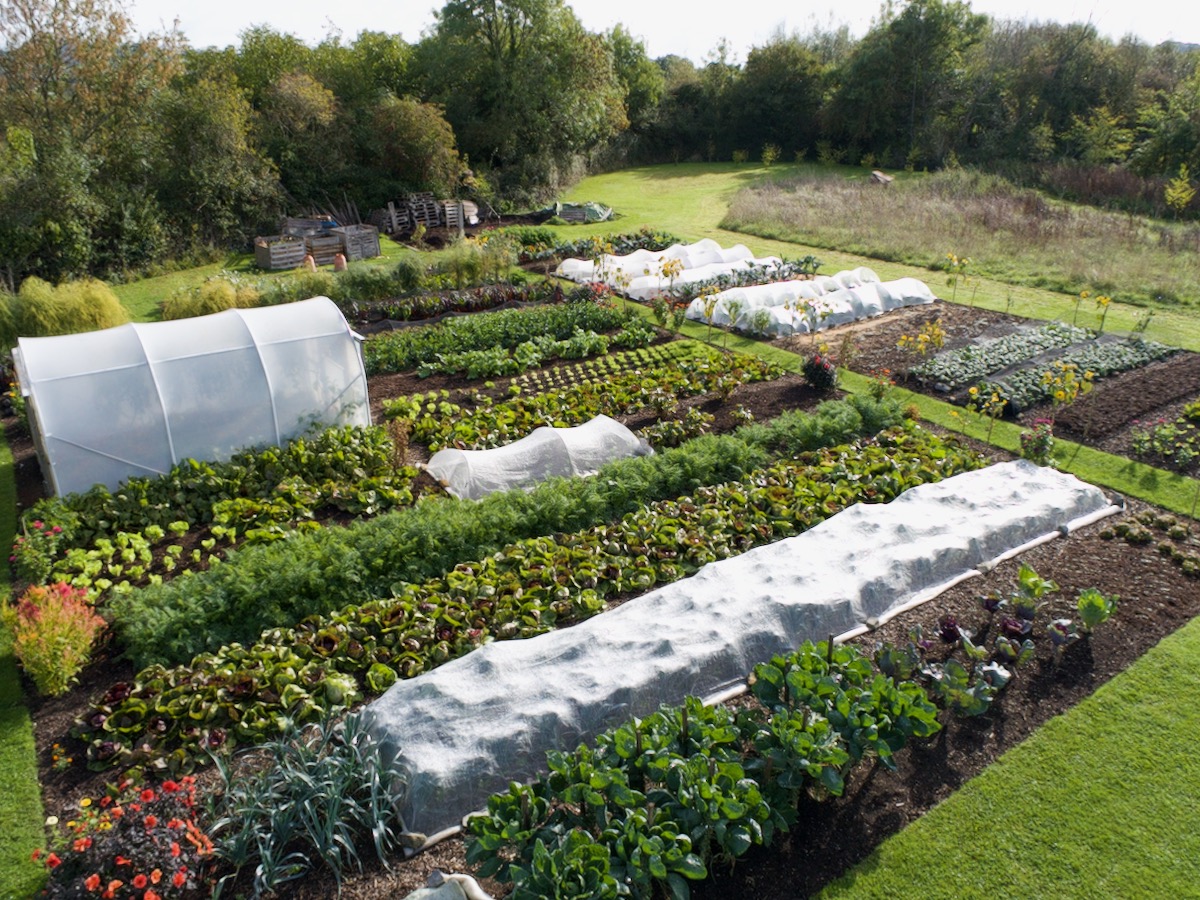

Late autumn already. No dig day is 3rd November.

Apply compost mulch now or soon
Now is the time for giving food to soil organisms, for the whole year ahead with one application of compost. In the main photo of Brussels sprouts, there is new compost under them.
Through 42 years of doing this, I have found it's the way that works best for soil, and is the most efficient use of time. We can do this now and it's one less job to do in the spring.
Plus the compost we apply before it gets too cold, is broken up by winter weather. Therefore by spring, it's soft and not sticky, ready for new seeds and plants.

Making compost using three pallet-heaps
You can make these heaps so easily. A three bay system requires just 10 pallets and 12 short pieces of wire. You don't need any stakes in the ground.
Find details in my Compost book, which also is available with me narrating.
The heap in the middle is never filled with fresh material, but receives the turned contents of each outer heap. In the photo above, it has three-month compost from the bay on right Out of picture), on top of five-month compost from the bay on left. See my video, which includes other types of heap and how to manage them.
Timings and results will vary according to how quickly you can fill each bay. At Homeacres we fill them within two months, then leave them for two months before turning. At that point, the worms have arrived and soon after that the compost can be used. Or if you leave it, it turns into exquisite worm compost of reduced volume.

As winter approaches, the garden continues to evolve

Two busy months ahead
I love the slower rhythm of autumn and the feeling of caring for soil. I'm noticing a lot of worm casts on beds and paths, and it's a pleasure to be feeding those earthworms, Lumbricus terrestris.
They are very different to the red worms, Eisenia fetida brandling worms, which we see in maturing compost. They live and die near the surface of soil and leave eggs which can survive for eight years.
That's why they always appear whenever plant material is decaying. I'm finding a fair few in chicory hearts I harvest, when the outer leaves start to decay.

Plant care

High humidity in mild autumn weather can cause beautiful green celeriac leaves to go yellow and brown very quickly, from Septoria apiicola, sometimes called late blight of celeriac. Celery and parsley suffer it too. I have just twisted off the lowest and most affected leaves.
Fortunately, most of the growing is done and the main thing now is to harvest them before the remaining leaves start to rot, because the blight could then get into the bulb. It’s nice that celeriac store really well, because they are so high in dry matter, and I just keep them in boxes in a shed. With a mouse trap nearby.
Learn more in my guide to growing celery and celeriac.

No dig, so beautiful
Compared to digging (see photo below and my Trials page), no dig is quicker, and less effort is needed. Plus, from using the same amount of compost you get more harvests.
As the Financial Times said, in a review of my No Dig book, it's a no brainer!

Growth speed with no dig

And sowings for November
Not many! Broad beans before mid-month, sweet peas and peas for shoots under cover, and plant garlic outside if not already done. Two days before full moon is a powerful time to sew any seeds, for strong results. This month that is 13th of November.
For broad beans, sow either in module trays, or direct outside. The cells are small in the trays I designed, so I transplant the little seedlings within two weeks.

Get Charles's advice in his free newsletter
& 10% off your first order in our shop




